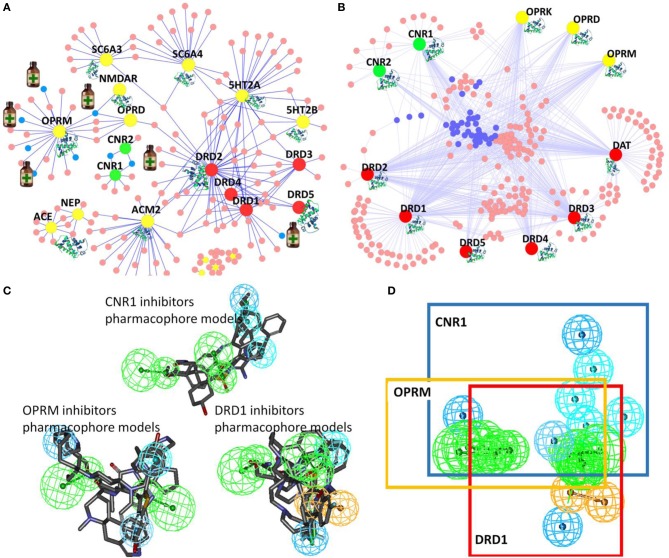Figure 4.
Illustration of TargetHunter webserver (www.cbligand.org/TargetHunter) for polypharmacology DA research. (A) TargetHunter mapping literature reported (abused) drugs-targets interactions. The large (yellow, green, and red) nodes represent targets. The small nodes (pink and blue) represent drugs, among which, seven, designated by medicine bottles (blue nodes), are approved/clinical trial medicine for DA treatments: (i) methadone, naltrexone, oxycodone, and buprenorphine targeting mu-opiate receptor (OPRM, large yellow nodes); (ii) Nabilone and Cannabidiol targeting cannabinoid receptor 1(CNR1 or CB1, large green nodes); and (iii) Adrogolide targeting dopamine receptor 1(DRD1, red). (B) TargetHunter prediction for possible cross-talk interactions of cannabinoid (CB) receptors (CNR1 and CNR2; green nodes), opiate receptors (OPRK, OPRD and OPRM; yellow) and dopamine receptors (DRD1, DRD2, DRD3, DRD4, and DRD5; red). Small blue and pink nodes in the center suggest potential cross-talk. (C,D) Pharmacophore models showing the shared common pharmacophoric features of the ligands of cannabinoid receptor 1 (CNR1), dopamine receptor D1 (DRD1) and mu-opioid receptor (OPRM).

